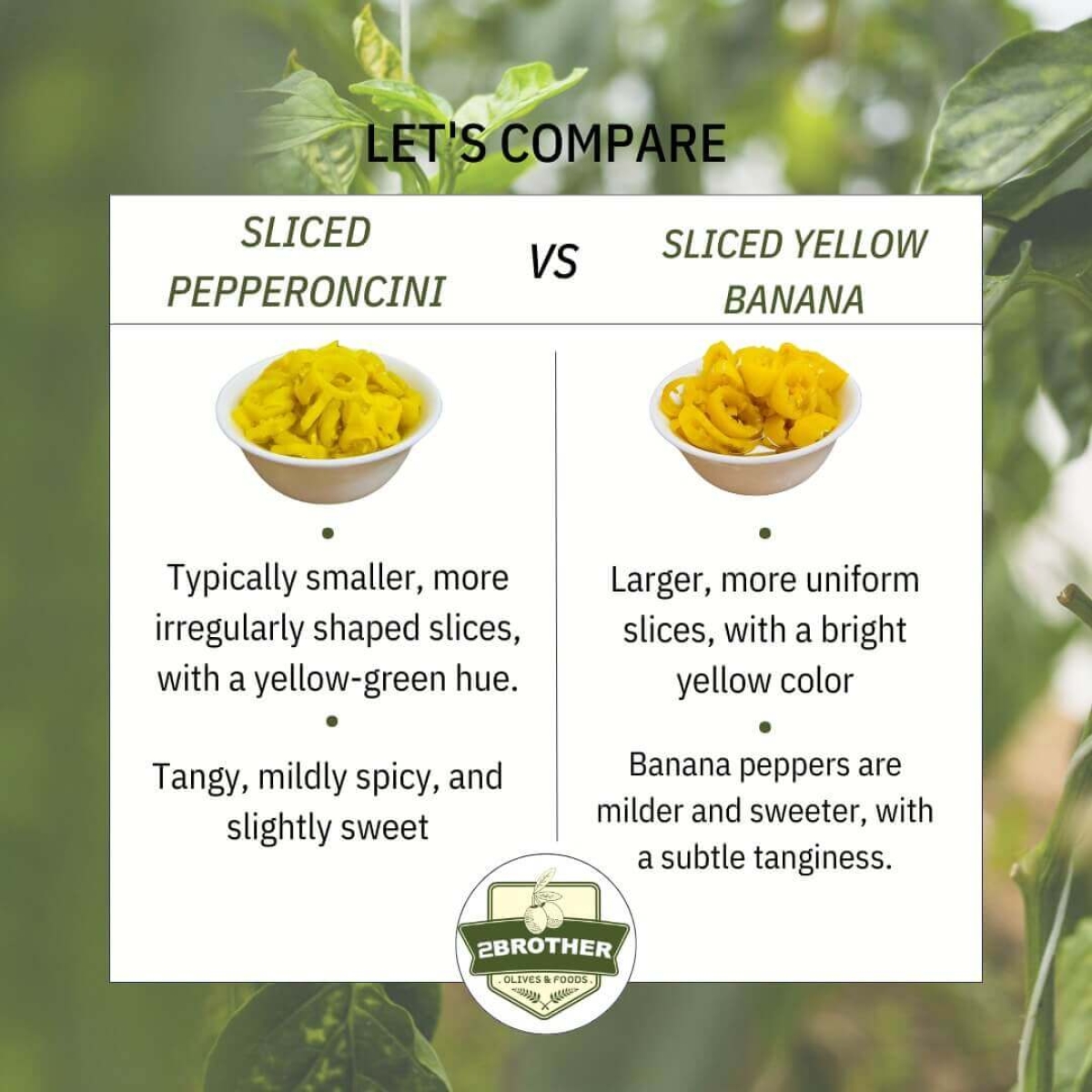Geschnittene Pepperoncini vs. Geschnittene Gelbe Bananenpaprika: Ein Geschmacksvoller Vergleich

Wenn es um eingelegte Paprika geht, fallen einem oft zwei Favoriten ein: geschnittene Pepperoncini und geschnittene gelbe Bananenpaprika. Obwohl sie ähnlich aussehen mögen, unterscheiden sie sich in Geschmack, Textur und kulinarischen Anwendungen erheblich. In diesem Blog beleuchten wir die Unterschiede und helfen Ihnen, die beste Wahl für Ihre Küche oder Ihr Menü zu treffen.
1. Geschmacksprofile
Geschnittene Pepperoncini:
Bekannt für ihren säuerlichen, mild-würzigen und leicht süßen Geschmack, sorgen Pepperoncini für eine kräftige Frische. In eingelegtem Zustand wird ihr Essiggeschmack noch intensiver, was sie zu einer mutigen Ergänzung für jedes Gericht macht.
Geschnittene Gelbe Bananenpaprika:
Bananenpaprika sind milder und süßer als Pepperoncini. Ihre subtile Säure sorgt für einen ausgewogenen Geschmack, der ein Gericht nicht dominiert, was sie zu einer vielseitigen Option für viele Rezepte macht.
2. Schärfegrad
Beide Paprika liegen am unteren Ende der Scoville-Skala, mit leichten Unterschieden:
Geschnittene Pepperoncini:
Scoville Heat Units (SHU): 100–500. Diese Paprika bieten eine milde, angenehme Schärfe, die Gerichten die richtige Würze verleiht, ohne den Gaumen zu überfordern.
Geschnittene Gelbe Bananenpaprika:
Scoville Heat Units (SHU): 0–500. Bananenpaprika sind typischerweise süßer und kaum bis gar nicht scharf.
4. Optik
Geschnittene Pepperoncini:
Diese Paprika sind kleiner, unregelmäßig geformt und haben eine gelb-grüne Farbe. Ihre runzlige Oberfläche verleiht ihnen einen rustikalen Charme, der sich gut als Topping oder Garnitur eignet.
Geschnittene Gelbe Bananenpaprika:
Mit ihrem leuchtend gelben, glatten und leicht größeren Scheiben sind Bananenpaprika optisch ansprechend. Ihre gleichmäßige Form verleiht Gerichten eine dekorative Note.
Welche Sollten Sie Wählen?
Letztendlich hängt die Wahl zwischen geschnittenen Pepperoncini und geschnittenen gelben Bananenpaprika von Ihren Geschmacks- und Texturvorlieben sowie der geplanten Verwendung ab:
- Wählen Sie Pepperoncini, wenn Sie säuerliche, mild-würzige Aromen mit einer weichen, saftigen Textur bevorzugen.
- Wählen Sie Bananenpaprika, wenn Sie einen süßeren, milderen Geschmack mit einer festeren Konsistenz bevorzugen.
Für Profis im Gastronomiebereich kann das Angebot beider Paprikas die Flexibilität bieten, eine größere Vielfalt an Gerichten und Kundenwünschen zu bedienen.









